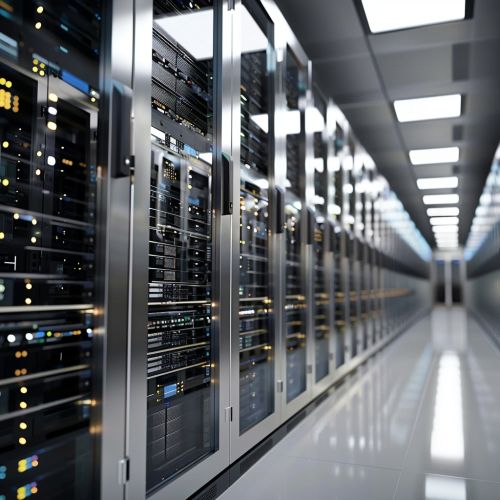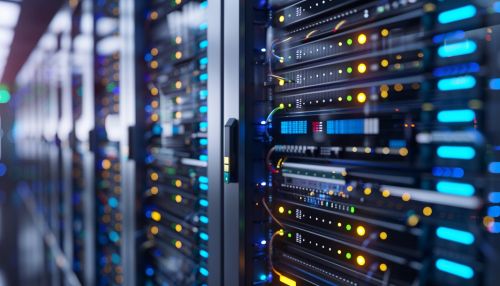Computer networking
Introduction
Computer networking is the practice of interconnecting multiple computing devices to share resources and information. This field encompasses a wide array of technologies, protocols, and architectures that enable communication between devices over various types of networks. Computer networks can range from simple local area networks (LANs) to complex wide area networks (WANs) and the global Internet. This article delves into the intricate details of computer networking, exploring its components, types, protocols, and applications.
Components of Computer Networks
Network Interface Cards (NICs)
Network Interface Cards (NICs) are hardware components that connect a computer to a network. Each NIC has a unique identifier known as a Media Access Control (MAC) address, which is used for network communication. NICs can be wired, using Ethernet cables, or wireless, using Wi-Fi technology.
Switches and Hubs
Switches and hubs are devices used to connect multiple devices within a LAN. A switch operates at the data link layer (Layer 2) of the OSI model and uses MAC addresses to forward data to the correct destination. Hubs, on the other hand, operate at the physical layer (Layer 1) and broadcast data to all connected devices, which can lead to network congestion.
Routers
Routers are devices that connect different networks and route data packets between them. They operate at the network layer (Layer 3) of the OSI model and use IP addresses to determine the best path for data transmission. Routers are essential for connecting LANs to WANs and the Internet.
Firewalls
Firewalls are security devices that monitor and control incoming and outgoing network traffic based on predetermined security rules. They can be hardware-based or software-based and are crucial for protecting networks from unauthorized access and cyber threats.
Modems
Modems (modulator-demodulator) are devices that convert digital data from a computer into analog signals for transmission over telephone lines and vice versa. They are commonly used for connecting to the Internet via dial-up or broadband connections.


Types of Computer Networks
Local Area Network (LAN)
A Local Area Network (LAN) is a network that spans a relatively small geographic area, such as a single building or campus. LANs are commonly used in homes, offices, and schools to connect computers, printers, and other devices. They typically use Ethernet or Wi-Fi technology for connectivity.
Wide Area Network (WAN)
A Wide Area Network (WAN) covers a large geographic area, such as a city, country, or even the entire globe. The Internet is the most well-known example of a WAN. WANs use various transmission technologies, including leased lines, satellite links, and fiber optics, to connect different LANs and other networks.
Metropolitan Area Network (MAN)
A Metropolitan Area Network (MAN) spans a larger area than a LAN but is smaller than a WAN, typically covering a city or metropolitan area. MANs are used to connect multiple LANs within a city, providing high-speed connectivity and shared resources.
Personal Area Network (PAN)
A Personal Area Network (PAN) is a network that connects devices within a very short range, typically within a few meters. PANs are used for connecting personal devices such as smartphones, tablets, and laptops using technologies like Bluetooth and infrared.
Virtual Private Network (VPN)
A Virtual Private Network (VPN) is a secure network that uses encryption and tunneling protocols to create a private connection over a public network, such as the Internet. VPNs are commonly used by businesses to provide remote access to their internal networks and by individuals to protect their online privacy.
Network Protocols
Transmission Control Protocol/Internet Protocol (TCP/IP)
The Transmission Control Protocol/Internet Protocol (TCP/IP) is the fundamental suite of protocols used for communication over the Internet. TCP ensures reliable data transmission by establishing a connection and managing data packets, while IP handles the addressing and routing of packets.
Hypertext Transfer Protocol (HTTP) and HTTPS
The Hypertext Transfer Protocol (HTTP) is used for transferring web pages and other resources over the Internet. HTTPS is the secure version of HTTP, which uses encryption to protect data during transmission.
File Transfer Protocol (FTP)
The File Transfer Protocol (FTP) is used for transferring files between computers over a network. FTP allows users to upload and download files from a remote server, making it essential for website management and data sharing.
Simple Mail Transfer Protocol (SMTP)
The Simple Mail Transfer Protocol (SMTP) is used for sending and receiving email messages. SMTP works in conjunction with other protocols, such as the Post Office Protocol (POP) and the Internet Message Access Protocol (IMAP), to manage email communication.
Domain Name System (DNS)
The Domain Name System (DNS) is a hierarchical system that translates human-readable domain names into IP addresses. DNS is essential for navigating the Internet, as it allows users to access websites using easy-to-remember names instead of numerical IP addresses.
Network Architectures
Client-Server Architecture
In a client-server architecture, multiple clients (computers or devices) connect to a central server to access shared resources and services. The server manages and provides resources such as files, applications, and databases, while clients request and use these resources.
Peer-to-Peer (P2P) Architecture
In a peer-to-peer (P2P) architecture, all devices on the network have equal status and can act as both clients and servers. P2P networks are decentralized, with each device sharing resources directly with others. This architecture is commonly used for file-sharing applications and blockchain networks.
Cloud Computing
Cloud computing is a model that delivers computing resources, such as servers, storage, and applications, over the Internet. Cloud services are provided by data centers and accessed remotely by users. Cloud computing offers scalability, flexibility, and cost-efficiency, making it popular for businesses and individuals.
Network Topologies
Bus Topology
In a bus topology, all devices are connected to a single central cable, known as the bus. Data is transmitted along the bus, and each device listens for data addressed to it. Bus topology is simple and cost-effective but can suffer from performance issues and collisions.
Star Topology
In a star topology, all devices are connected to a central hub or switch. The hub acts as a central point of communication, with data being sent from one device to another through the hub. Star topology is reliable and easy to manage, but the failure of the central hub can disrupt the entire network.
Ring Topology
In a ring topology, devices are connected in a circular fashion, with each device having two neighbors. Data travels in one direction around the ring, passing through each device until it reaches its destination. Ring topology can provide high performance but is vulnerable to failure if a single device or connection breaks.
Mesh Topology
In a mesh topology, each device is connected to multiple other devices, creating a web-like structure. Mesh topology provides high redundancy and reliability, as data can take multiple paths to reach its destination. However, it is complex and expensive to implement.
Network Security
Encryption
Encryption is the process of converting data into a coded format to prevent unauthorized access. Encryption algorithms, such as Advanced Encryption Standard (AES) and Rivest-Shamir-Adleman (RSA), are used to secure data during transmission and storage.
Authentication
Authentication is the process of verifying the identity of a user or device before granting access to a network. Common authentication methods include passwords, biometrics, and two-factor authentication (2FA).
Intrusion Detection and Prevention Systems (IDPS)
Intrusion Detection and Prevention Systems (IDPS) monitor network traffic for suspicious activity and potential threats. IDPS can detect and respond to attacks in real-time, helping to protect networks from cyber threats.
Virtual Private Networks (VPNs)
Virtual Private Networks (VPNs) create secure connections over public networks by encrypting data and using tunneling protocols. VPNs are used to protect online privacy and provide secure remote access to networks.
Network Performance
Bandwidth
Bandwidth is the maximum amount of data that can be transmitted over a network in a given period. It is typically measured in bits per second (bps). Higher bandwidth allows for faster data transfer and improved network performance.
Latency
Latency is the time it takes for data to travel from the source to the destination. It is measured in milliseconds (ms). Low latency is crucial for real-time applications, such as online gaming and video conferencing.
Throughput
Throughput is the actual amount of data successfully transmitted over a network in a given period. It is influenced by factors such as bandwidth, latency, and network congestion. High throughput indicates efficient data transfer and network performance.
Quality of Service (QoS)
Quality of Service (QoS) refers to the ability to prioritize certain types of network traffic to ensure optimal performance. QoS mechanisms can allocate bandwidth and reduce latency for critical applications, such as VoIP and video streaming.
Emerging Technologies in Networking
5G Networks
5G networks are the next generation of mobile networks, offering significantly higher speeds, lower latency, and greater capacity compared to 4G. 5G technology enables advanced applications such as autonomous vehicles, smart cities, and the Internet of Things (IoT).
Software-Defined Networking (SDN)
Software-Defined Networking (SDN) is an approach to network management that separates the control plane from the data plane. SDN allows for centralized control and programmability of the network, enabling dynamic and efficient resource allocation.
Network Function Virtualization (NFV)
Network Function Virtualization (NFV) involves virtualizing network functions, such as firewalls and load balancers, and running them on standard hardware. NFV reduces the need for specialized hardware, lowers costs, and increases network flexibility.
Internet of Things (IoT)
The Internet of Things (IoT) refers to the interconnected network of physical devices, such as sensors, appliances, and vehicles, that communicate and exchange data. IoT technology enables smart homes, industrial automation, and connected healthcare.
Conclusion
Computer networking is a vast and dynamic field that plays a critical role in modern communication and information sharing. From the basic components and types of networks to advanced protocols and emerging technologies, understanding the intricacies of computer networking is essential for leveraging its full potential. As technology continues to evolve, computer networks will become even more integral to our daily lives and the functioning of society.
